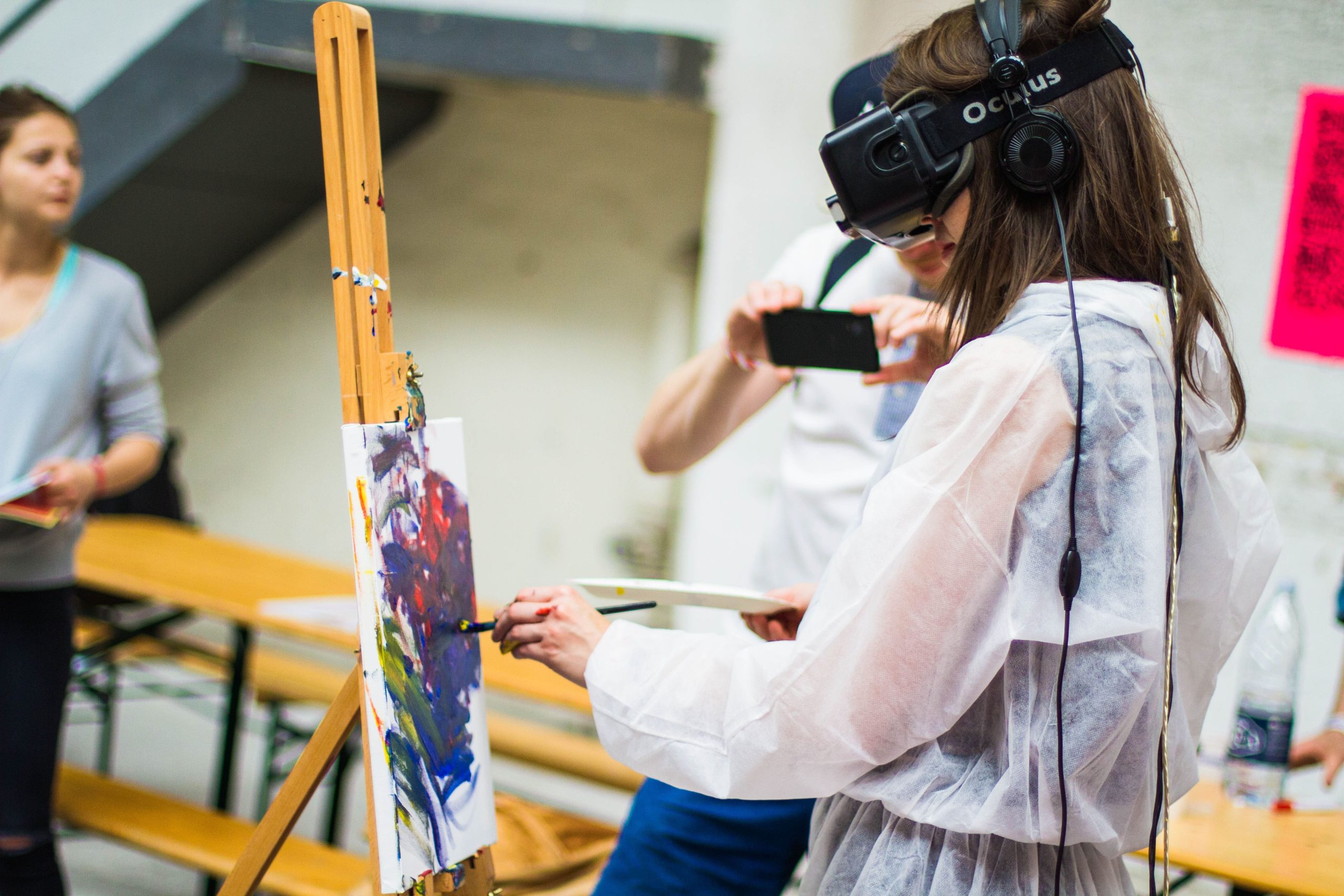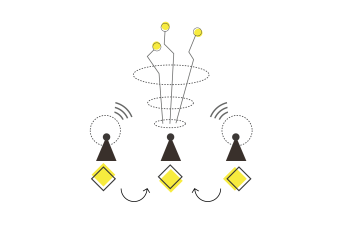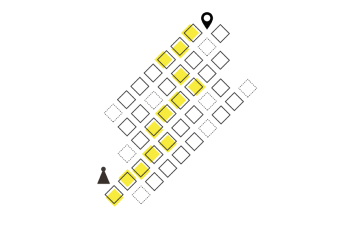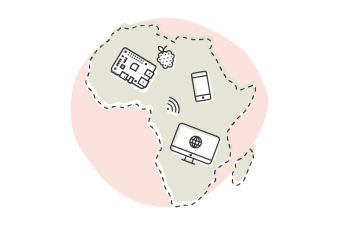
How edtech can transform learning for the better
blog | Words Sarah Ward | 09 Jul 2018
In the third contribution to Education Week’s Learning Deeply blog series, Sarah Ward and Tom Beresford share successful examples from Singapore and the United States that show how technology is implemented in schools makes all the difference for student learning.
This blog was originally published by Education Week. You can see the original version here.
Lots of people, including many educators, have great faith in the role that technology can play in transforming learning for the better. For decades the unstoppable march of technological progress has promised to unlock a radical shift in our education systems and create step changes in the performance of our schools.
When used at its best, education technology (ed tech) is designed and implemented to support the development of “softer skills” and dispositions that are required to thrive in today’s world (e.g., deeper learning, independent learning, teamwork, presentation skills, confidence, critical thinking, questioning, and digital literacy).
Yet with the potential of technology comes risk.
Researchers at the OECD have warned that the digital divide in education goes beyond the issue of access to technology. A second digital divide separates those with the competencies and skills to benefit from computer use from those without, therefore contributing to the widening of equity gaps. Access to technology can also expose children and young people to new risks that–left unmitigated–can do them serious harm.
‘What Works’ Agenda–Not Just the What, but the How
The evidence base about the impact of ed tech on learning outcomes is still emerging, with a loose global community of entrepreneurs, philanthropists, educators, and policy makers still learning in real time about what works (and what does not) and for whom.
Concerted efforts to grow the evidence base around “what works” are ramping up. The United Kingdom’s Department for International Development (DFID) has proposed investing £19.9 million (US$26 million) over eight years to form a global “what works” evidence hub to answer key research questions such as “what works to spread and scale ed tech interventions to deliver better learning outcomes for the poorest children in developing countries?” and “which edtech interventions present the greatest value for money?”
Meanwhile, the Global Partnership for Education has launched a new funding channel–KIX (Knowledge and Innovation Exchange)–and is looking to provide seed funding for promising innovations to leverage ed tech at scale in the developing world; a particular focus will be on classrooms and schools in some of the lowest-resourced countries.
While these initiatives will generate much needed learning about which technological solutions have a positive impact on learning outcomes, they focus on the what. If ed tech is to truly transform learning, we also need to understand the how.
How can designers, policy makers, system leaders, teachers, and other stakeholders come together to make technologies effective, drive innovation and generate new practices? How is the right ed tech integrated into existing teaching practices, school structures, and learning cultures? These are the types of questions Innovation Unit have been raising with organizations and networks who are serious about the sustained use of ed tech for learning. Our collective knowledge of how to do this well (and how not to do it) exists in the stories of success and failure.
The Importance of Purpose and Problem-Solving
If we’re serious about ed tech being a transformative force for education, we need to be clear about where we want to get to–what is the purpose of education in a changing world, and what role does ed tech have to play?
Over the last year, Innovation Unit has been working in partnership with Aga Khan Education Services, Aga Khan Foundation, and both UNICEF’s Eastern and Southern Africa, and West and Central Africa Regional Offices (ESARO and WCARO) to research and investigate education technology stories from diverse contexts to understand the complex relationships between purpose, use, context, and impact.
Our research showed that unlocking the value of ed tech is reliant on how teachers, schools, and systems implement it.
Any effective ed tech strategy must first and foremost ask how ed tech contributes to the overall purpose of education and how that should be communicated and owned.
Ed tech must also be in service of problem solving. Systems, schools, and classrooms need to identify a specific teaching and learning problem or opportunity in their context and develop the right education technology strategy, as part of a broader purpose.
System Story: Singapore’s Technology Master Plan
Singapore boasts the world’s top performing education system. Yet it has not taken a backseat in the face of an innovation-driven economy. Currently on their fourth Technology Master Plan (2015 onwards), the Singapore government has pursued a systematic and systemic approach to the introduction of ed tech into schools and continuing support for its effective adoption and deployment for teaching and learning. Master Plan 4 offers a vision for future-ready and responsible digital learners, where quality learning is in the hands of every learner, empowered with technology. In this vision teachers are designers of learning experiences and environments and school leaders are culture builders.
The country’s eduLab–schools that are tasked with developing ICT innovations so that they can be adopted by schools across the system–has adopted better and more advanced data technology to help in science lessons. Instead of using traditional textbooks to understand the theory of gravity, schools have purchased accelerometers and light-gate sensors to allow students to see the results of gravity first-hand. This level of immersion allows students to retain the concepts learned in classes more easily and exemplifies the shift to skills-based learning, where students are not merely memoriing the concepts and laws governing physics, but applying them to everyday life to learn to solve problems.
This growth mentality has resulted in a top-down shift to skills-based learning and a bottom-up willingness to embrace change and adopt technology in learning to unlock a deeper understanding of the concepts taught.
School story: Summit Public Schools
Stateside, Summit Public Schools is a charter management organisation (CMO) operating 11 schools on the west coast of the United States that enroll approximately 2,000 students. Originating in Silicon Valley as a response to surprisingly poor local outcomes (fewer than half of students graduate eligible to attend a four-year college, and one in five drop out altogether), it was founded on the principle that all means all–a place intentionally designed to serve and embrace every individual child in a richly diverse community.
“Summit Learning” is a personalised, project-based learning (PBL) curriculum that puts Summit students “in charge” of their own learning through their Personalised Learning Platform (PLP)–an online tool to help students set and track goals, learn content at their own pace, and complete authentic, deep learning projects using a hands on and inquiry-based approach. Summit teachers access data from the PLP on how their students are performing on a daily basis and use that to personalize instruction and provide additional support through mentoring and coaching.
Summit’s impact has been impressive and is now considered by many as a “school of the future.” Graduates are on track to complete college in six years at double the national average; 43 percent of students met or exceeded math standards, compared to only one in three California students; and 63 percent of Summit students exceeded English language arts and literacy standards, compared to 43 percent of students in the state.
Technology should be interesting and effective for students or users. These stories tell us that this is dependent on particular students in a particular context. Furthermore, being clear about the purpose and specific contribution that ed tech can make is fundamental to both understanding and realising its potential to enrich and transform learning.
If you would like to learn more about Innovation Unit’s education technology research, please contact Sarah Ward and Tom Beresford.

The edtech litmus test
What does it really take to reap the promise of technology? Five experts judge the value and role of technology in education.
19 Jun 17

Context is King
How can we use edtech in schools and what does it mean for school design?
22 Jun 17

Digital Learning in Africa
Innovation Unit starts an exciting research project working with UNICEF, in partnership with the Aga Khan Foundation and Aga Khan Education Services, to envisage the opportunity for digital learning in and across Africa.
25 Oct 17